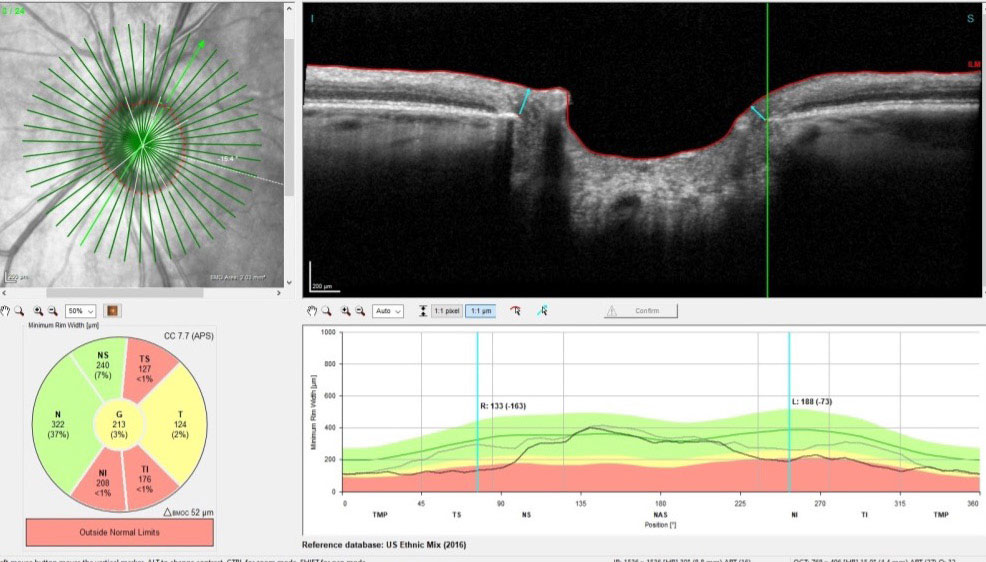 |
| For up to seven days post-trab, changes in BMO-based parameters may be seen in patients. Photo: James Fanelli, OD. Click image to enlarge. |
Structural reversal of disc cupping is a phenomenon known to occur after various surgical interventions aiming at lowering intraocular pressure (IOP). It is not known how quickly after this lowering in IOP the increase in Bruch’s membrane opening minimum rim width (BMO-MRW) occurs. Researchers in Germany recently determined that IOP-lowering surgery influences BMO-based morphometric parameters significantly and as early as one day after the intervention and that the increase in BMO-MRW correlates to the extent of the IOP reduction. They noted that retinal nerve fiber layer (RNFL) thickness and BMO area were not influenced by an acute change in IOP.
The study included longitudinal analysis of 25 eyes of 25 patients treated with trabeculectomy. The team analyzed BMO-MRW and peripapillary RNFL thickness at baseline and one day, two to three days and one week after surgery.
The findings indicated that there was a small buildup of BMO-MRW increase over the first week after surgery while the IOP was continuously lowered. One day after surgery, the mean BMO-MRW increased by 26.17µm. (mean IOP reduction of 17.01mm Hg). This increase persisted on days two to three with a mean increase in the BMO-MRW of 25.33µm (mean IOP reduction of 20.46mm Hg). By one-week post-op, there was a mean BMO-MRW increase of 33.10µm (mean IOP reduction of 22.55mm Hg).
The team also found a small yet significant decrease in RNFL thickness from baseline compared with day one and days two to three in fellow eyes by a mean of 1.30µm and 1.40µm, respectively, without any detectable change in IOP.
“This study suggests that the increase in BMO-MRW is caused by the decrease in IOP rather than by the surgery itself,” the authors wrote in their paper. “This can be deducted from the fact that those eyes without a reduction in IOP one day after surgery also did not show the relevant change in BMO-MRW at this time point.”
The researchers concluded that clinicians should consider these changes in BMO-based parameters when evaluating patients’ longitudinal follow-up not only after glaucoma surgery but also after other IOP-lowering or -raising events.
Gietzelt C, Lüke JN, Adler W, et al. Short‑term changes in Bruch’s membrane opening‑based morphometrics during the first week after trabeculectomy. Graefes Arch Clin Exp Ophthalmol. April 8, 2022. [Epub ahead of print]. |

